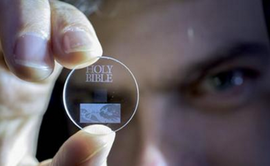Ugh, a week spent servicing laptops. This reminds me of why I tell people to avoid certain brands of computers.
Most Apples, portable Dells, and the ultrathin HP systems tend to have one thing in common; they are extremely difficult to service. Its not that they require special tools (Okay, some apples require special tools, and some sony laptops require a secure torx head), taking them apart without damaging the case is extremely difficult. Cudos to Toshiba, MSI, Sony, Compal, and Sager for designing laptops with servicing and upgrading in mind. If you are buying a disposable machine, you may choose based on any criteria meaningful to you and its purpose; but, if you are buying a tool to use for 3-6 years, be mindful that minimum repair costs for the Dell or Apple laptops will include a 30 minute labor charge to disassemble them in order to get to any components compared to 5 minutes or less for many of the others. While the new Lenovo machines require you to remove the entire back, that process goes fairly quickly and there is a simple procedure to get the back off without damaging it or any of the components. For some reason Apple and Dell laptops seem to not have been designed for easy tear down and access to commonly upgraded components. In the long run, this makes certain brands of computers artificially expensive to own; for a long time this has been one of the factors that made laptops more expensive to keep running that desktops. Improved designs by some manufacturers like those listed above has greatly reduced this difference between laptops and desktops. Naturally, gaming and other video intensive activities still favor desktops; but even that gulf is being reduced with some of the newer designs for gaming laptops and CADD intended laptops.
On another unrelated topic, the malware and virus cavalcade just keeps on building. No, your favorite website does not adequately screen the advertisements on its pages and yes, you can start the spiral into numerous pieces of malware taking over your computer with a single click. Even the very best of protection packages won’t protect you if you insist on installing that “free” screensaver or background photo thingy. Need a little utility to help you remember all your web passwords? Please choose something other than the one from the free advertisement. If something pops up and takes over your screen telling you that your computer has been infected, it is telling you the truth and it is one of the bugs itself. That weird phone call where some nice person tells you that you have been infected and they, from Microsoft or Symantec, will help you fix that for a nominal fee? Yeah the fee won’t be nominal and help like they will offer you don’t need (trust me Microsoft will never call you; Neither will any reputable firm unless you call them first). One last thing; think you are safe because you use an Android or OSX system? Nope, more new malware detected for those systems last month than for Windows systems.
A quick reminder, hard drives usually carry a warranty for 1 to 3 years; there is a good reason for this. The manufacturers have studied, very carefully, how long this technology will reliably operate and 3 years is about the maximum you can count on. After that, well, the odds are simply against you. You can take several approaches to hedging your bets (and the safety of your data, documents, photos, or whatever); but good backups is what I recommend first. Replacing drives that are more than four years old will usually improve speed as well as data reliability and is thus a good idea also. Choosing a SSD (solid state disk drive) will improve system performance noticeably; but, they still only have a five year expected data retention life (longer, but not permanent).

Backup early and often, please.
